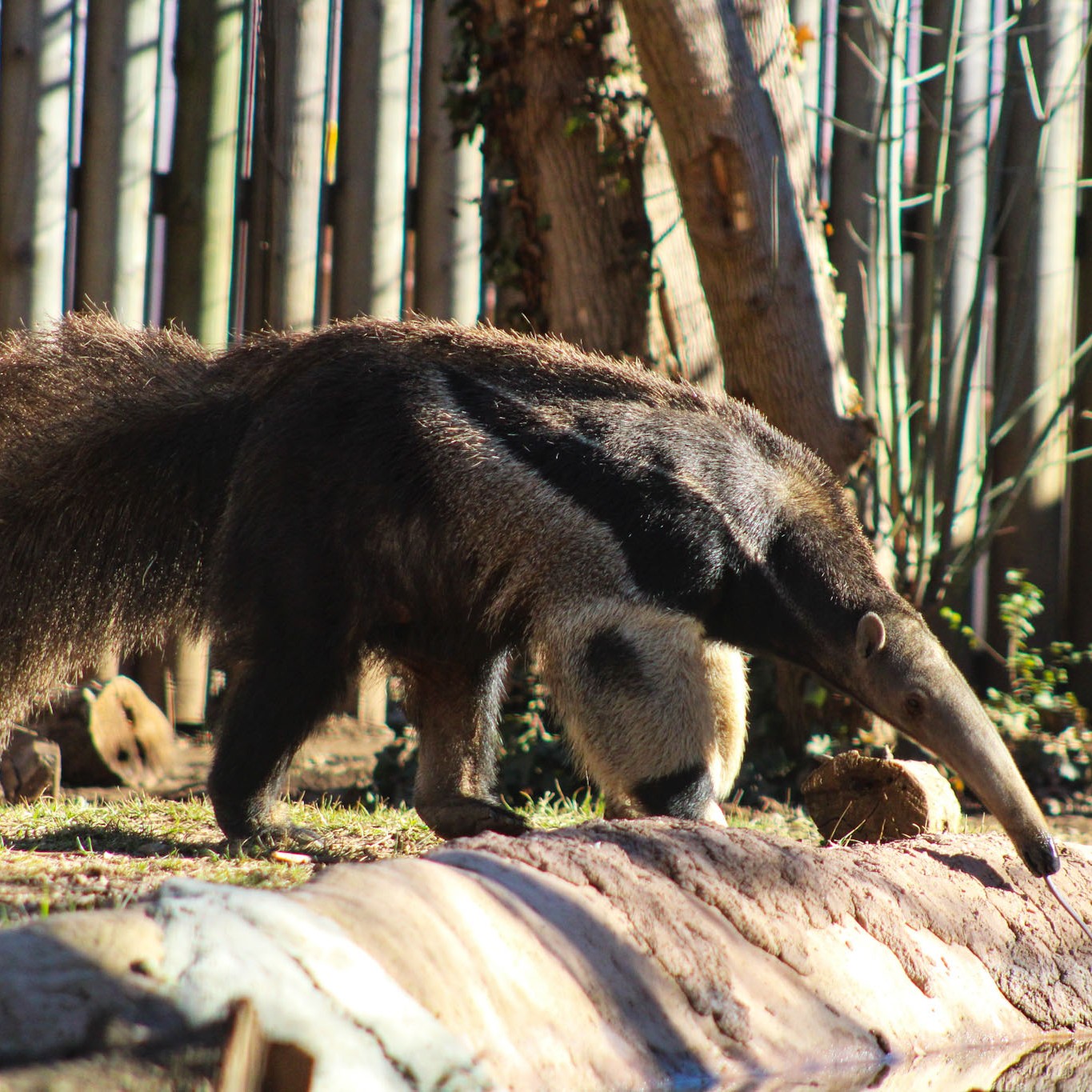- The life and habits of Pico, the male giant anteater, highlighting his behavior and favorite activities at the zoo.
- The impact of heart disease on giant anteaters and how it affects their health and lifespan.
- The emotional and professional challenges faced by zookeepers when caring for and saying farewell to beloved animals.
- The role of zoos in wildlife conservation and the importance of educating the public about lesser-known species like the giant anteater.
- Betsy, the female giant anteater, and how the zoo continues to care for its animals while fostering public engagement and awareness.
Pico, the male giant anteater, was a beloved resident of our zoo known for his charming personality and unique traits. From basking in the sunlight to relishing his favorite treats, Pico’s daily routine was a delight to observe. His fondness for avocados and yogurt showcased his distinct preferences, while his eagerness to interact with visitors at the zoo’s encounter events highlighted his gentle disposition. Beyond his endearing attributes, Pico also exhibited typical behavior for giant anteaters, such as cooling down by swimming or enjoying a refreshing spray of water during the hot summer months. These activities were not only enjoyable for him but also provided essential enrichment that stimulated his physical and mental well-being. His presence in the zoo offered an invaluable opportunity for visitors to learn about the natural habits of giant anteaters, often sparking curiosity and admiration among guests.
Giant anteaters, including Pico, are susceptible to certain health conditions, with heart disease being notably common. Heart disease in giant anteaters poses significant challenges as they have high metabolic rates, making them prone to cardiac issues. This predisposition often necessitates specialized veterinary care and tailored management strategies to prolong their health and longevity. The diagnosis and treatment involve regular health checks, careful monitoring, and sometimes medications to manage symptoms and prevent complications. While these efforts strive to prioritize the anteaters’ well-being, heart disease remains a leading cause of mortality within captive populations. In Pico’s case, despite receiving comprehensive medical attention, his condition ultimately led to his passing, underscoring the ongoing need for research and improved healthcare protocols for giant anteaters in zoos worldwide.
For the zookeepers and staff, saying goodbye to animals like Pico is an emotionally taxing experience. These professionals dedicate their time and effort to ensuring optimal care for the zoo’s inhabitants, forming deep bonds with them over the years. The loss of an animal resonates through the team, creating a poignant sense of absence. However, these moments also reinforce the importance of their dedication to animal welfare and education. Zookeepers often channel their grief into resilience, drawing from their experiences to enhance their care practices and contribute positively to the welfare of other animals. Moreover, these challenges underline the emotional strength required in the field of zoo management, where building connections with animals goes hand-in-hand with the reality of life cycles.
Zoos play a crucial role in wildlife conservation and education, acting as ambassadors for endangered and lesser-known species like giant anteaters. By hosting these animals, zoos provide a platform for raising awareness about their ecological importance and the threats they face in the wild, such as habitat loss and declining food resources. Educational programs and encounters encourage public involvement, fostering a deeper understanding of conservation initiatives and inspiring support for protective measures. Zoos also contribute to scientific research, offering insights into the biology and behavior of species that are otherwise challenging to study in their natural habitats. Consequently, establishments like zoos serve a dual purpose: safeguarding species for future generations while equipping the public with knowledge to advocate for biodiversity preservation.
Betsy, the female giant anteater, continues to thrive in the wake of Pico’s departure. Her presence reminds staff and visitors alike of the ongoing commitment to animal care and welfare. Betsy’s routines, observed as she roams her habitat, offer further insights into the intricate lives of giant anteaters. Feeding schedules, habitat enrichment, and veterinary care remain integral aspects of her daily life, ensuring her health and contentment. The zoo maintains its mission by providing Betsy, and all its inhabitants, with a safe and nurturing environment. Simultaneously, Betsy’s continued role as an educational ambassador allows visitors to learn about giant anteaters, fostering a connection with a species that many may never encounter otherwise.
In summation, Pico’s legacy lives on through the educational opportunities he provided and the awareness he raised about giant anteaters. His time at the zoo enriched the lives of both visitors and staff, demonstrating the profound impact well-cared-for zoo animals can have on public perception and wildlife conservation efforts. Meanwhile, Betsy’s ongoing presence at the zoo continues this legacy, promoting appreciation and understanding for these remarkable creatures.
*****
Source Description
It is with great sorrow that we announce the passing of Pico, our male giant anteater. Pico had heart disease which is, unfortunately, very common among giant anteaters. Saying goodbye is the hardest part of what we do, but we want to take the opportunity to appreciate Pico and the years of joy he brought to both Zoo guests and staff.
Pico could often be seen sunbathing in his habitat. He would lay on his back, stretch out and take naps in the sunshine. He loved eating avocado, yogurt and other treats, and he always enjoyed meeting guests and participating in encounters. He also liked cooling down in the summer by swimming in his pool and getting sprayed with the water hose.
We miss Pico dearly, and we remain thankful for the time we had with him. We are also thankful for all our visitors who showed Pico so much love during his life.
Betsy, our female giant anteater, is doing well and can be seen in her habitat at the Zoo.

